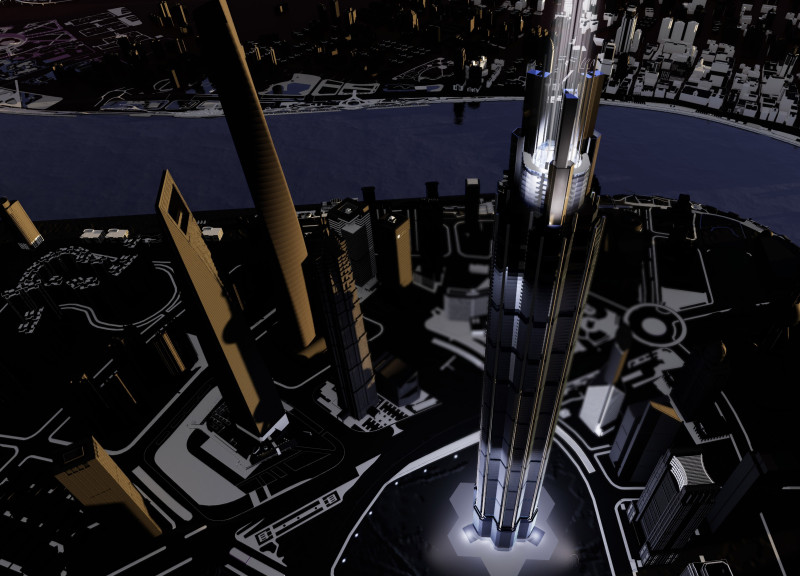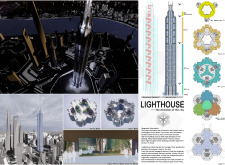5 key facts about this project
"Lighthouse — The Direction of the City" is located in the Lujiazui district of Shanghai, an important area known for its collection of tall buildings and business activity. The design takes inspiration from the idea of a lighthouse, serving as a guiding presence amid the complexities of urban life. Centered on multifunctionality, the building aims to meet the diverse needs of its users. It integrates various activities into one cohesive space, fostering interaction among individuals.
Design Concept
The concept brings together a metaphor of a lighthouse within the urban context. This is expressed through the use of hexagonal shapes that challenge traditional forms. By emphasizing layering and interwoven spaces, the design creates a rich and engaging environment. This distinct geometric approach serves not only to enhance visual appeal but also to ensure practical functionality.
Spatial Organization
The building includes several specific areas, such as a Sky Restaurant Floor, Hotel Floor, Office Floor, Lobby Floor, and an Indoor Office Space Close to Nature. Each of these zones is thoughtfully placed to allow movement and encourage interaction among the occupants. The layout supports a variety of activities while addressing the needs of different users. This organization promotes a sense of community, relevant to both work and leisure settings.
Core Decentralization
A key feature is the decentralized core tube, which adds flexibility to the building's design. This choice allows for a more adaptable space that can change with time. By moving the core away from the center, the design fosters a natural integration of various functional areas. This strategy aligns with the need for buildings to adjust to evolving urban environments and user requirements.
Geometric Interplay
The project's strength lies in the creative use of hexagonal forms, which enhance the overall experience. These shapes add visual interest and create a dialogue between the inside of the building and the outside world. The attention given to natural light and views connects the structure to its surroundings, promoting a comfortable environment for users.
Throughout the design, the focus on integrating natural elements indicates a desire to create spaces that enrich daily life. This approach enhances well-being while staying connected to the vibrancy of the urban setting.



















































